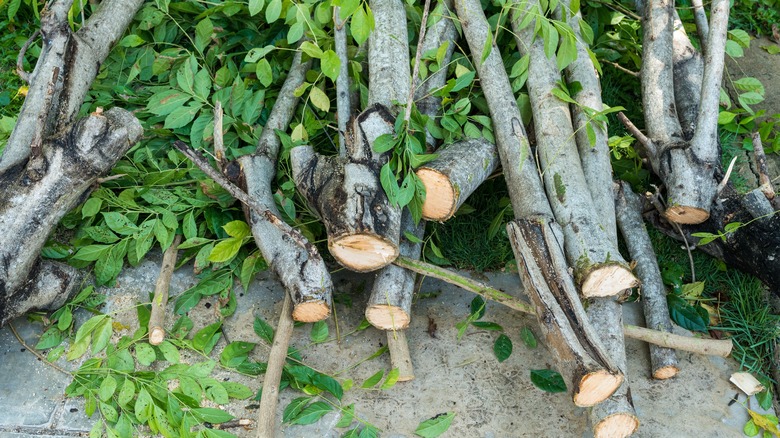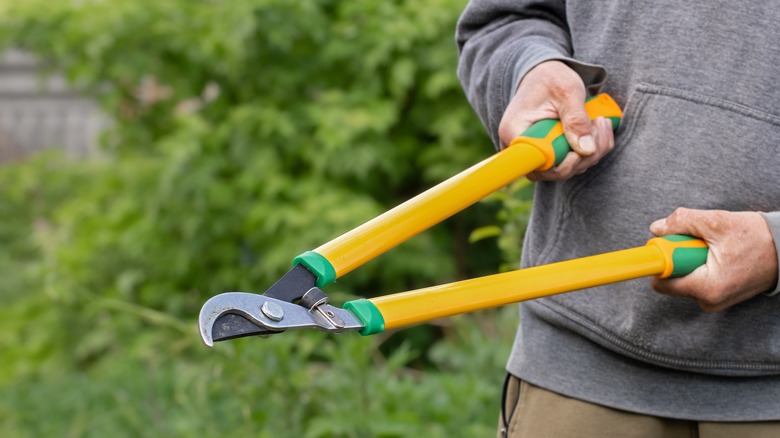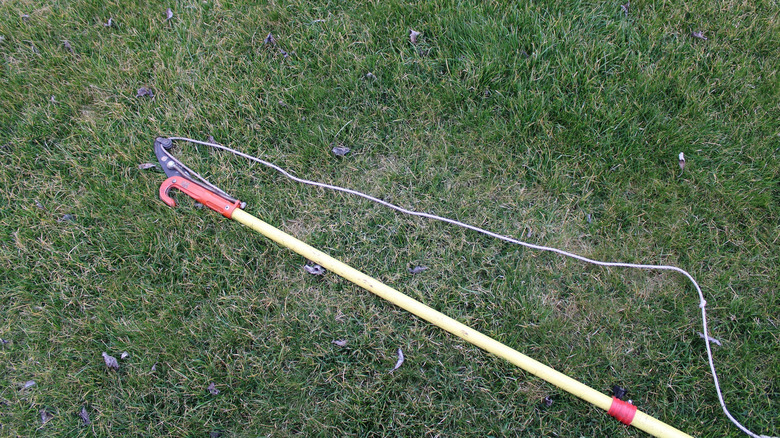The Tree-Trimming Tools You Simply Can't Go Without
We may receive a commission on purchases made from links.
Trimming trees might sound like an easy job, but it's a whole other ball game when you're up close and personal with a stubborn branch. Whether you're trying to get your overgrown yard under control or shaping that one plant always reaching for the sky, having the right tools is essential. A good set of trimming tools will ensure your trees stay healthy, look good, and grow properly, which makes for a better yard. Some of the trusty tools you need are pruning shears, loppers, and pole pruners.
Pruning shears, also called hand pruners, are your go-to, right-in-the-palm tool for tree trimming. Hand pruners are compact, which means they are easy to carry around, and you don't need a whole workout session just to snip a few branches. With pruners in hand, you can reach into tight spaces where the bigger tools won't fit. They are great for trimming off little, unruly branches, shaping up bushes, or even taking care of flowers that need a quick snip.
While using a pair of pruners is mostly straightforward, there are still a few tricks to getting it right. First, always make sure you have sharpened your pruning shears. A dull blade won't just make you frustrated — it's actually bad for your trees, leaving rough cuts that can make them prone to pests and disease. Also, when trimming, aim for a clean, angled cut close to where the branch meets the trunk or stem. Pruning shears are best for smaller branches, so if you are eyeing something thicker, call in the next tool: the mighty lopper.
The bigger, bolder lopper
Loppers are like the big brother of pruners, built for those studier branches that laugh at your hand pruners. These tools have longer handles, which give you extra leverage to cut through branches that are too thick for pruners but not quite big enough to need a saw.
Choosing the right lopper can feel a bit like choosing the right car — there are different kinds, and each one has its unique strengths. There are anvil loppers and bypass loppers, each for slightly different tasks. Anvil loppers have a single straight blade that cuts against a flat edge, making them better for dry, dead branches. Bypass loppers like the Extendable Bypass Loppers Tree Trimmer with Compound Action, on the other hand, are like giant scissors and work great for fresh, live branches, giving a clean cut without squashing the stem. Whatever type you choose, ensure the handles are long enough to provide you with good leverage but not so long as they are unwieldy.
Loppers might look intimidating, but they are surprisingly easy to use. Approach the branch you're trimming, position the loppers carefully, and apply even pressure as you cut. With loppers, aim to trim branches that have a diameter of up to 2.5cm. Anything bigger and you're going to have a tough time — plus you'll risk damaging the loppers. Always keep both hands on the handles and take it slow. If you're trying to reach branches way up high, it's time to bring in the big guns: the pole pruner.
The tool for hard-to-reach spots
The pole pruner is for those hard-to-reach branches that mock you from way up high, just out of arm's length. Pole pruners are, as the name suggests, pruners on a long pole. They are the ultimate tool for when your tall trees are in desperate need of a trim, letting you cut branches without a ladder. Some pole pruners even come with adjustable lengths, so you can extend them as needed.
Just like with other tools, there are different types of pole pruners to choose from. Manual ones like the 2-Foot Pole Pruner have a simple design with a rope pulley system that lets you pull and cut with precision. Then, there are powered pole pruners (battery or gas-powered) that make it easier to cut through thicker branches. With a powered pole pruner, you won't need as much arm strength, but you'll want to be careful -– they pack quite a punch.
Using a pole pruner might look simple, but there's a bit of a learning curve. First, make sure to stand with your feet apart for good balance. Keep a firm grip and slowly extend the pruner to the branch you want to cut. Aim carefully, especially if you are using a manual pole pruner, as the cut can be tricky to control. For powered pole pruners, stay steady and let the pruner's power do the work. Keep in mind that powered pole pruners can be a bit heavier and may need charging or fuel. Either way, both types will save you from the hassle of balancing on a ladder while reaching for high branches.


